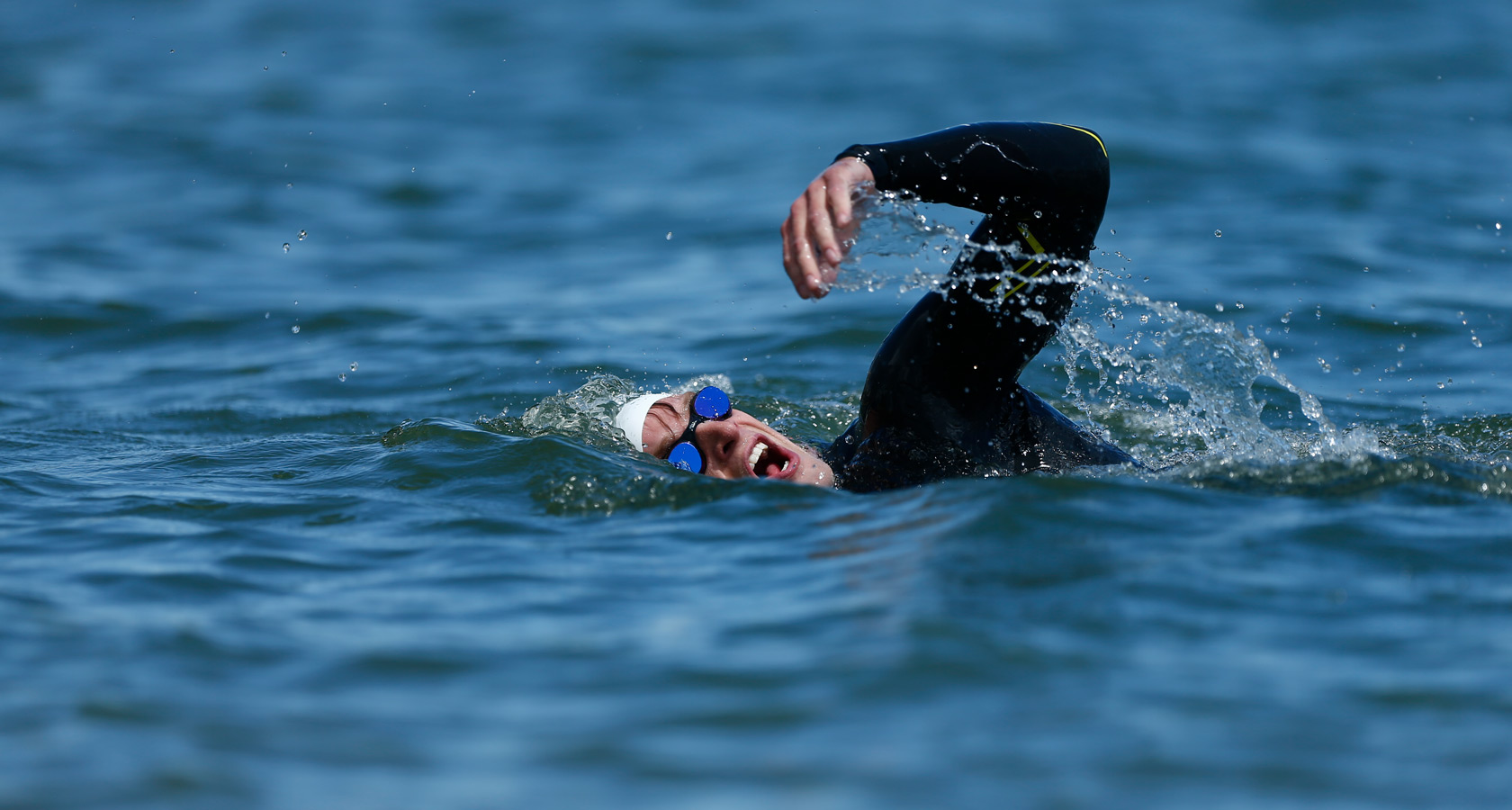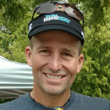Photo Credit - Jack Dempsey
Swim Training: Breathing for Beginners
Breathing — it comes completely naturally to all of us. It is an activity that will function without interruption or conscious thought under the control of the autonomic nervous system. When necessary, we can assume conscious control in order to increase oxygen supply while under stress or in a fight/flight state of mind. In our world, triathlon equals a fight/flight state.
Breathing is easy on the bike and run. While there are a few tricks to rhythmic breathing in both of these legs, you don’t have to move around and ask your surroundings permission in order to get a breath. In swimming, you do.
From a beginner standpoint, the two most important aspects of breathing in swimming are becoming comfortable with:
- Your face in the water while swimming
- A rhythm to your breathing
Face in the Water
Keeping your face in the water is step one, because if you swim with your head up or your face out of the water, your legs and hips will invariably drop. A high-head/low-hip position requires you to push more surface area through the water, creating more drag. This makes it harder to swim because there is more resistance. Imagine cycling with a parachute attached to your back. This will force you to take additional rest breaks in training or on race day as your heart rate increases and you cannot keep up with the oxygen demands of your muscles.
There are different tricks to keeping your face in the water. Be sure to have comfortable goggles. Focus on looking at the bottom or staring at the black line down the center of the lane in the pool. If you experience anxiety related to submersion, take a lot of rest breaks and remember that as far as pool training goes, you are never very far from the wall and an exit. Private swim lessons and a lot of practice will help.
Rhythmic Breathing
Once you are comfortable keeping your face/head in the water while swimming, you need to figure out how and when to breath. The critical action here is to begin exhaling through your nose/mouth as soon as you finish breathing in.
The major problem I see with beginner swimmers related to breathing is that they hold their breath while their face is in the water, then try to exhale and inhale very quickly when turning to breathe. This results in a poor, shallow breath and a quick buildup of carbon dioxide in the lungs. Swimmers will have to stop and take a break in training or roll over on their backs to catch a few deep breaths in racing.
You must exhale while your face is in the water. So when you turn to breathe, your lungs are mostly empty and ready to accept a fresh breath of air. You do need to force the rhythm a bit. You should forcefully exhale through your nose/mouth as soon as you complete the breath. There’s no pausing. It is a constant rhythm.
Bilateral Breathing
The good thing about three-stroke or bilateral breathing? It will help you create and maintain an even stroke and improve mechanics on both sides of your body. The bad thing? It increases the time between breaths by 50 percent over a two-stroke or one-sided breathing pattern. That is a huge decrease in total oxygen flow while swimming.
My advice is to include bilateral breathing in your workouts during warm-up, drills, easy aerobic sets and short sprints like 25s and 50s. Switch to one-sided breathing for moderate/hard-distance and mid-distance sets. If you want to continue working on stroke balance, breathe to the left going down the pool and to the right coming back.
The main problem with breathing to one side all the time is that it usually creates a hitch or imbalance in one side. Typically one side becomes a bit stronger and you will veer off course in open water. The main benefit, however, is more air, which is nice when you are trying to swim fast.


